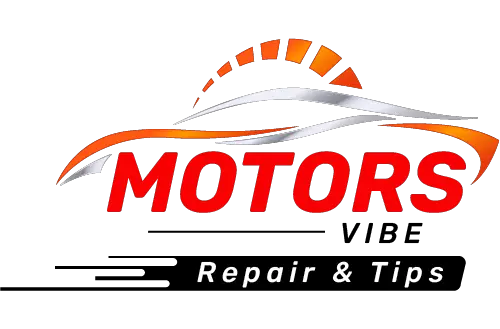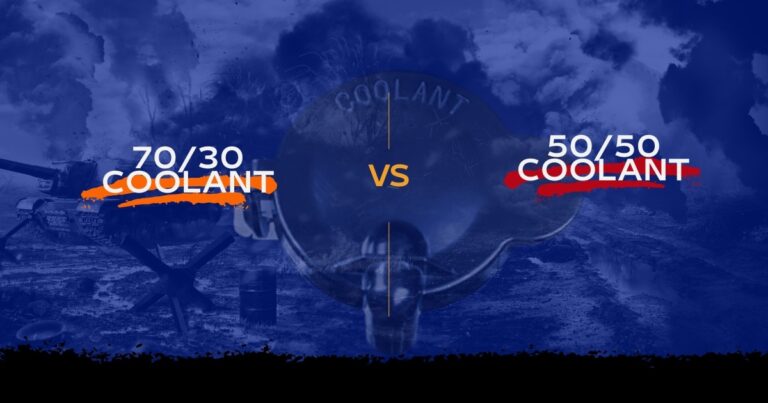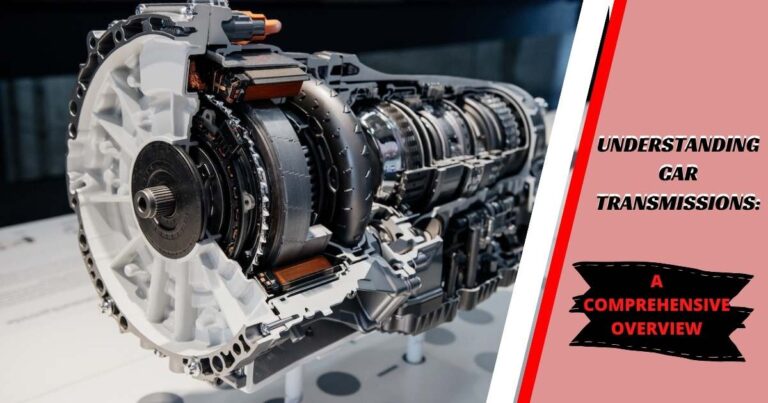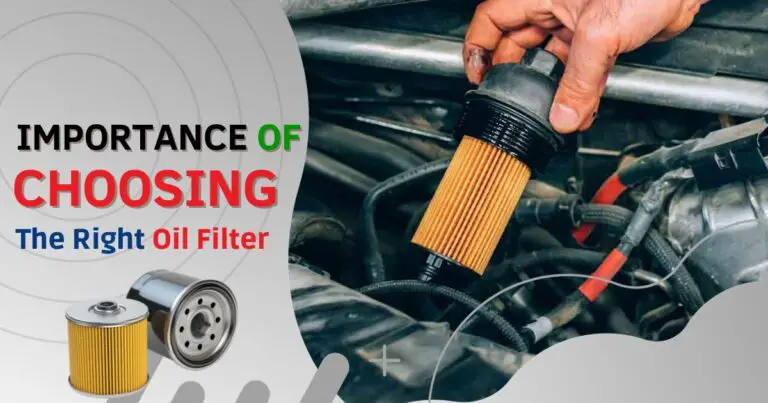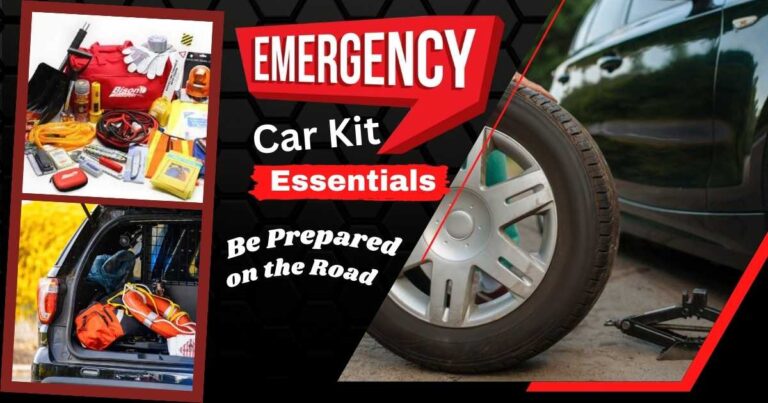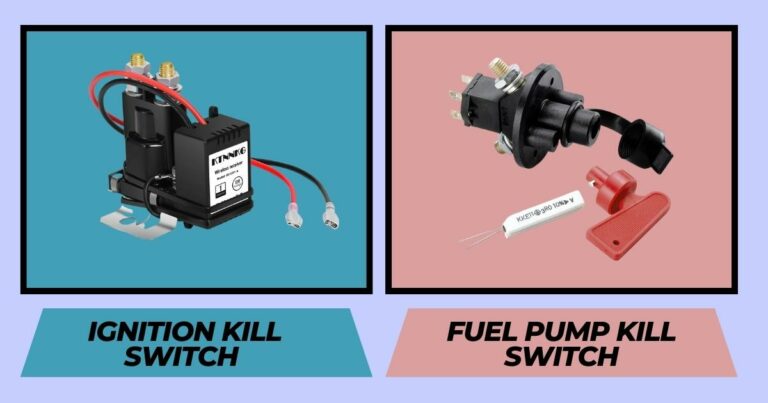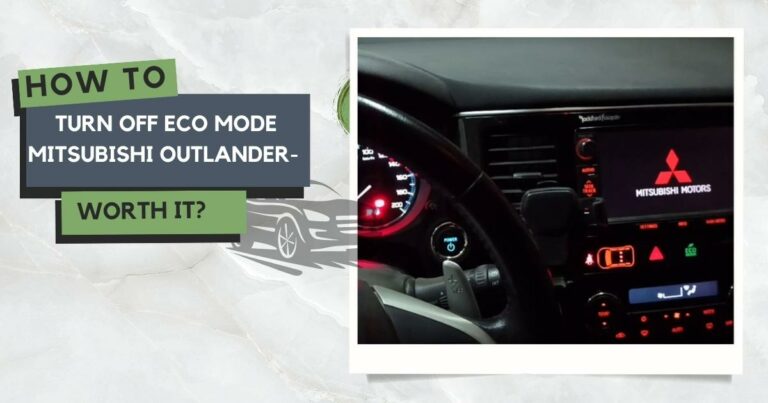Riding Smooth: A Guide to Understanding Car Suspension Systems
The suspension system is often considered the backbone and primary support system of a vehicle. Imagine driving on a bumpy road without anything to absorb the bumps and shakes – the car would be extremely uncomfortable to drive.
The suspension system helps make your ride smoother by absorbing these bumps and keeping your car steady. Without it, driving would be like a roller coaster, but not in a fun way. Plus, the suspension system helps with how the car handles turns and keeps it stable.
So, to have a car that’s comfy, safe, and easy to drive, you need a good suspension system. Let’s take a look at the ins and outs of a car suspension system and how it impacts your driving experience.
Basics of Car Suspension Systems
A car suspension system refers to a network of interconnected components designed to manage the vehicle’s interaction with the road surface. Its primary purpose is to enhance ride comfort by mitigating the impact of uneven terrain, bumps, and shocks. The suspension system serves as a buffer between the car’s body and the wheels, which helps absorb and dissipate the forces generated during driving.
The suspension system has a significant impact on vehicle stability and control by effectively managing the distribution of weight and forces. It ensures that all four wheels consistently maintain contact with the road surface, which is essential for preserving traction during turns or sudden maneuvers.
Beyond this, a high-performing suspension system works to minimize body roll by preventing excessive leaning when navigating corners and facilitating an overall stable driving experience. Furthermore, it actively contributes to effective braking and acceleration by optimizing the overall control the driver exercises over the vehicle.

Components of Suspension Systems
Tires
Tires are the only part of the vehicle that makes direct contact with the road. The tires provide traction, support the vehicle’s weight, and contribute to overall handling and braking. The condition and proper maintenance of tires are essential for ensuring optimal safety, fuel efficiency, and driving comfort. In addition, proper inflation of tires is crucial for maintaining optimal vehicle performance.
Springs
Springs are devices designed to absorb and manage the impact of shocks and irregularities on the road. These components store energy as they compress and release it when encountering bumps or uneven surfaces. This helps to absorb and manage the impact of shocks and irregularities, which provides a smoother and more controlled ride for the vehicle’s occupants.
Shock Absorbers
Shock absorbers, also known as dampers, are components designed to control and dampen the oscillations and vibrations generated during the compression and rebound of springs. Their primary purpose is to control the movement of the springs, which, in turn, prevents the vehicle from bouncing excessively.
Struts
Struts are key components of a vehicle’s suspension system that combine the functions of a shock absorber and a spring into a single unit. Struts provide structural support, shock absorption, and springing functions to help maintain stability, control, and comfort in the vehicle’s ride.
Control Arms
Control arms are structural elements that connect the suspension system to the vehicle’s frame. Their primary function is to facilitate the up-and-down movement of the wheels, thereby allowing the motor vehicle to adapt to changes in road surfaces. Beyond this, control arms help maintain proper wheel alignment, which provides stable handling and responsive steering.
Sway Bars
Sway bars, also known as anti-roll bars, are components within a vehicle’s suspension system designed to minimize body roll during turns and maneuvers. These bars are typically made of metal and connect the left and right sides of the suspension to help balance weight distribution by transferring force from one side to the other.
Linkages
Linkages, just as the name suggests, connect different components of the suspension system to allow them to work together seamlessly. The primary function of linkages is to ensure coordinated movements and enhance the overall stability and control of the vehicle.
Bushings
Bushings are cushioning components that help to control movement and reduce friction between moving parts. These components are typically made of rubber or polyurethane to provide vibration isolation and minimize wear.
Types of Suspension Systems
Suspension systems can be broadly divided into two main categories: dependent and independent. These variations depict the extent to which opposite wheels can move autonomously from each other. When it comes to dependent suspension systems, the movement of one wheel directly influences the actions of the other wheel on the same axle. On the other hand, independent suspension allows each wheel to move autonomously, unaffected by the actions of its counterpart.
Independent Suspension Systems
An independent suspension system is a design that allows each wheel of a vehicle to move independently of the others. This means that the motion or impact on one wheel does not directly affect the opposite wheel on the same axle.
The term independent simply refers to the separate motion of each wheel or suspension. Many modern vehicles feature independent front suspension (IFS), but some may incorporate independent rear suspension (IRS) to allow both front and rear wheels to move independently.
This system contributes to better ride quality and handling, thanks to the lower unsprung weight and the ability of each wheel to address the road irregularities without interference from the other. While independent suspension demands more engineering effort, it offers significant advantages in terms of performance and ride comfort.
Types of Independent Suspension
MacPherson Strut
MacPherson Strut is a widely used independent suspension system for front-wheel-drive vehicles. It combines a shock absorber and a coil spring into a single unit to simplify the design and reduce space requirements. This suspension is found in a variety of vehicles, from compact cars to SUVs.
Double Wishbone (A-arm)
Also known as A-arm suspension, this system features two wishbone-shaped arms that control the wheel’s movement. This design provides precise wheel control, which results in superior handling and ride comfort. This suspension is often used in high-performance and luxury vehicles.
Multi-link Suspension
This sophisticated system utilizes multiple links and control arms to manage wheel movement independently. This design offers a balance between handling and ride comfort. Multi-link suspension is primarily found in mid-range to high-end vehicles.
Swing Axle
A swing axle is a type of independent rear suspension design used primarily in older cars. The swing axle design is characterized by a single transverse-mounted axle, with each wheel attached to a half-shaft that pivots at a fixed point on the chassis. It is a relatively simple system that provides flexibility to handle uneven road surfaces.
Trailing Arm Suspension
A trailing arm suspension is an independent suspension that uses a trailing arm to connect the wheel hub to the vehicle’s chassis. The trailing arm is responsible for controlling the vertical movement of the wheel. This allows for a high degree of flexibility in absorbing shocks and bumps.
Dependent Suspension System
A dependent suspension system is a type of suspension setup in which the movement of one wheel on an axle is directly influenced by the movement of the opposite wheel on the same axle. In other words, the wheels are interconnected, and the motion of one wheel affects the behavior of the other wheel.
The wheels are typically connected to a solid axle, torsion beam, or similar component. This means that the motion of one wheel, such as upward compression in response to a bump, will affect the other wheel on the same axle.
Dependent suspension systems often come in a simple design compared to independent suspension systems. They have fewer components and are less complex to manufacture. Due to their simplicity, dependent suspension systems are more cost-effective to produce and maintain.
One of the main drawbacks of dependent suspension is that it limits the independence of each wheel’s movement. When one wheel encounters an obstacle or uneven terrain, the other wheel is affected, leading to reduced traction and a less comfortable ride.
Dependent suspension systems are often found in the rear suspension setups of many traditional vehicles, especially in trucks, some SUVs, and entry-level cars. While they may not offer the same level of wheel independence and dynamic handling as independent suspensions, dependent systems still provide adequate performance.
Types of Dependent Suspension
Solid Axle
A solid axle suspension is a design where both wheels on an axle are connected to a single, rigid axle. This configuration results in the direct influence of one wheel’s movement on the other. Solid axle setups provide stability under heavy loads and are typically found in the rear suspensions of trucks, some SUVs, and heavy-duty vehicles.
Torsion Beam
A torsion beam suspension, also known as a twist-beam rear suspension, is a type of rear suspension commonly used in smaller cars. This suspension utilizes a solid beam or tube that is attached to the chassis of the vehicle. The wheels are then connected to the beam via a pivot. This design provides inherent lateral stability, which offers better handling characteristics, especially during cornering.
Signs of Suspension Issues
A well-maintained suspension system is essential for a smooth and controlled ride. However, the system is prone to wear and tear, considering the conditions in which a vehicle operates. If you notice any of the following signs, it may be an indication of an underlying suspension issue that needs attention;
Uneven Tire Wear
Uneven tire wear is a clear indicator that something may be amiss with your vehicle’s suspension system. Uneven wear often manifests as excessive wear on either the inner or outer edges of the tire tread. Furthermore, irregular depressions or scalloped patterns on the tire surface indicate uneven pressure distribution, typically caused by suspension issues.
Vehicle Pulling to One Side
If your vehicle consistently pulls to one side while driving, it can be a sign of issues with the suspension or alignment. This is often caused by worn-out components or misalignment. If left unaddressed, it can compromise the vehicle’s stability and handling, especially during emergency maneuvers. This can increase the risk of accidents and impact overall road safety.
Bumpy or Rough Ride
A suspension system that is functioning properly should provide a smooth and controlled ride. If you experience a bumpy or rough ride, it could signal problems with shock absorbers, struts, or other suspension components.
Excessive Bouncing
Excessive bouncing or body movement, especially after hitting a bump or during braking can be a sign of worn-out shocks or struts. If these components fail to absorb shocks effectively, the vehicle may bounce excessively, compromising ride comfort and handling.
Knocking or Clunking Sounds
Unusual knocking or clunking sounds, particularly over bumps or rough terrain, often signal issues with the vehicle’s suspension system. For instance, if the shock absorbers are damaged, they can produce knocking sounds as they struggle to control the suspension’s movement. Getting to the root of the unusual noise is crucial for both the vehicle’s performance and the safety of its occupants,
Fluid Leaks
Leaking hydraulic fluid could be a sign of failing suspension components. Ideally, fluid leaks can diminish the shock absorbers or struts’ ability to dampen vibrations, leading to a rougher ride. Furthermore, it can affect the suspension’s ability to maintain stable contact with the road.
Difficulty Steering
If you experience difficulty steering or the steering feels loose, it could be related to suspension issues. For instance, worn-out or damaged components can affect steering responsiveness. This can, in turn, lead to increased play in the steering, resulting in a loose or imprecise feel.
Suspension Maintenance Tips
- Periodically inspect the components of your suspension system, including shocks, struts, springs, bushings, and control arms. Look for signs of wear, damage, or leaks. If you notice any issues, it is always a good idea to address them as soon as possible.
- Rotate and balance your tires regularly to ensure even wear. Uneven tire wear can impact the alignment and balance of the suspension system. Also, ensure that your wheels are properly aligned. Misaligned wheels can lead to uneven tire wear and affect the handling of the vehicle. If you notice the car pulling to one side or experiencing steering issues, consider getting the wheel alignment checked.
- Pay attention to unusual noises, such as clunks or rattles, during driving. These can be indicators of potential suspension issues.
- Keep the tires properly inflated according to the vehicle manufacturer’s recommendations. Ideally, underinflated or overinflated tires can impact the performance of the suspension system. Remember, proper tire pressure promotes optimal contact with the road surface and contributes to a smoother ride.
- Avoid rough driving, especially over potholes, speed bumps, and other obstacles. Driving aggressively or hitting bumps at high speeds can accelerate wear on suspension components.
- Consider your driving conditions and preferences when selecting suspension components. For daily commuting and comfort, a well-balanced system with quality shocks and struts may be suitable. On the other hand, performance-oriented driving may benefit from sport-tuned shocks and struts.
- If you’re looking for enhanced performance or specific driving characteristics, consider upgrading to aftermarket suspension systems. These may include adjustable coilovers, high-performance shocks, and specialized sway bars.
Conclusion
It is not common to find motorists inquiring about the type of suspension in the vehicle they’re considering, but that doesn’t make it less of a component compared to the car’s engine. That said, understanding how the suspension system works is crucial, especially if comfort is a priority for you. Car suspension system not only contribute to a comfortable seating experience but also play a significant role in maintaining consistent handling and braking performance for your vehicle.
